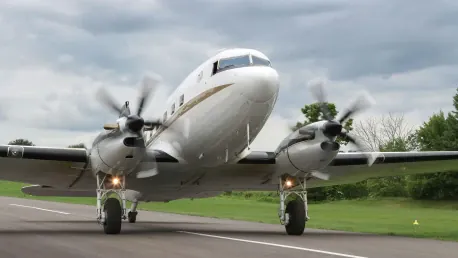5G will soon be commonplace at airports, and the idea of everything intelligently connected to everything will be viable.
Upgrading from 4G to 5G isn’t just about the network—it’s about pushing the boundaries of what’s currently possible. The current 4G/LTE network can manage around 10,000 devices per square kilometer. Compare this to the one million per square kilometer that is possible with 5G, and you can see how IoT has the potential to become a total game-changer for daily life.
How Do 5G Networks Benefit Aviation?
The aviation industry relies on collaboration, communication, security, and visibility to ensure that their day-to-day operations run smoothly. With the implementation of 5G, connectivity between airports, airlines, ground staff, air traffic control, and other services will be significantly increased.
Regardless of the technology—whether it be 4G, 5G, or other generations beyond—telecommunications networks will play a valuable role in aviation. For 5G, the higher bandwidth, reduced latency, ability to handle more devices, and prioritization of connections will enable future airspace management concepts such as UTM (Unmanned Aircraft System Traffic Management).
Most importantly, the aviation industry requires the right level of connectivity to guarantee the highest level of safety and efficiency.
What Are Some of the Changes Within the Airport Experience?
5G will be able to enable AI to solve major chokepoints present today. For example, AI-assisted computer vision can remotely biometric-match passengers to their bags, making it simpler to return lost luggage to the correct person and even to prevent lost luggage in the first place. The same can be applied to gate areas, where bags can be identified and counted to intelligently predict capacity issues for hand luggage capacity onboard and necessary action is taken before boarding begins.
For the airport, assets will be connected to make monitoring efficient and optimize usage. Vehicle fleet management can incorporate IoT technology with 5G to deliver considerable savings in fuel costs, overall resources, and even labor through efficiency.
Aircraft will become an IoT-flying-device—fast transmission of aircraft data, data analysis, and visualization of that data will allow airlines and aviation companies to deliver proactive maintenance, quicker turnarounds on the ground, increase on-time departures, and as a result, a greatly improved customer experience. All necessary systems to accompany aircraft will always be connected thanks to 5G and satellite communication systems, so it becomes a flying data center.
Disruption management will greatly improve within airports, allowing the airport management to act faster with the most appropriate response. It is said that 5G will likely replace the TETRA digital radio comms service that airports currently use for operational and mission-critical services. Rather than having a voice-only solution, airport staff will be able to use the 5G network to access real-time video updates and live information feeds based on evolving situations.
Finally, passengers will have more personalized mobile services provided, combining data from all other digital experiences in and around the airport. This allows the airport to provide its passengers with relevant and contextual information and services to assist and entertain. With the speeds of 5G, passengers can download entertainment to enjoy offline on their flight in a matter of seconds and even live stream TV while on the ground with no disruptions, no matter how busy it is.
Final Thoughts
In conclusion, putting IoT and 5G together will offer great opportunities for airlines, airports, and any other company in the aviation industry to unlock the value of all their data to deliver tangible business benefits.









